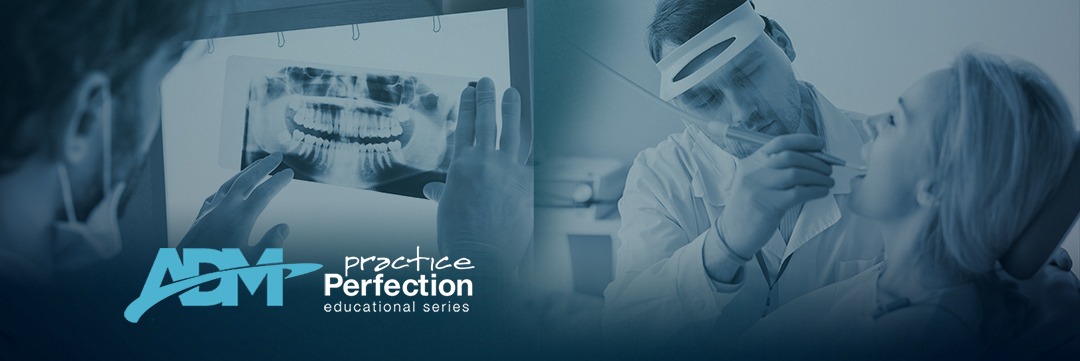By Daniel A. Bobrow, MBA (University of Chicago) & MBA (K.U.L. Belgium)
Your team members can’t just answer the phone. They need to connect with the patient. This is the first of two Issues concerned with how.
A 2007 survey commissioned by AIM Dental Marketing® revealed that 78% of dentists indicated their biggest dental marketing challenge is getting their team to properly field telephone inquiries from prospective patients. But there are some simple ways to improve your teams’ phone etiquette, from changing the tone of their voice to thinking more about what they’re actually saying, asking, and even the use of silence.
For many, calling the dentist can be an act of courage. This is especially the case when the caller is responding to an invitation to join the practice because then, in addition to the usual trepidation, there may be other concerns—such as ‘what’s the catch?’
An appreciation for the caller’s mindset and emotional state can go a long way toward preparing the team to deftly handle such calls,
The first goal of a successful dental marketing tactic is “getting the phone to ring.” But this is not the ultimate objective. What happens after the phone rings is every bit as important as getting it to ring in the first place. Until they find a way to actually deliver dentistry over the Internet, the telephone will continue to be the main gateway people use to learn about your practice. Even web-based inquiries will, almost invariably, culminate with a phone call. So the effectiveness with which your front office team converts such calls to solid patient appointments is a key determinant of marketing plan effectiveness.
Establish Rapport & Convey Empathy
Because people don’t care how much you know until they know how much you care, the first step in connecting with callers is to establish rapport and convey empathy. This is remarkably simple for people with a caring attitude, who merely need help ‘showing’ that concern over the telephone. Your greeting is the key.
Smile, enunciate, use your name, state your practice’s tagline (if you do not have one, get one; if you don’t know what one is, or why it’s important to have one, call me or learn more about creating or enhancing your professional dental identity. Nearly without exception, whatever the person says or asks next, reply with “I can help you with that. My name is (your name), with who am I speaking?’ Now that you’ve got the caller’s name, use it. If you did not hear it correctly, apologize for a poor connection and ask for it again.
Show some enthusiasm
One way to appreciate the importance of showing enthusiasm to first time (and all!) callers is to ask yourself how you would rather be greeted if you were to call your office. Would you rather hear “Dental office” or “Thank you for calling our dental office, this is Danny speaking. How may I help you?” While you can tell, just by the words, which is the preferable introduction, it’s how the words are spoken that really makes the difference. Specifically, project, enunciate and vary the tone of your speech, and you’ll create that all-important first impression.
Visual gap
Professor Albert Mehrabian’s research at UCLA determined that three components comprise our communication:
- The visual component (a.k.a. body language). The motion and expression of the face and body
- The vocal component. The tone, resonance and projection of the voice and
- The verbal component. The actual words spoken
When measured, the effect of each component on the believability of the message showed:
- The visual component accounted for 55%
- The vocal component contributed 38% and
- The verbal component contributed just 7%
These findings make it clear why telephone etiquette, combined with the appropriate choice of words, is essential in diminishing the telephone’s “visual gap” and enhancing the believability of the message (as well as that of the messenger).
Trigger pullers and tire kickers
In my writing and speaking about Internet-generated inquiries, I often make the distinction between trigger pullers and tire kickers. Trigger pullers are people who have already chosen to take action. The majority of prospective patients fall into the category of tire kicker. Someone calling you for the first time needs to be treated differently than someone who is familiar, and comfortable, with the practice. The tire kicker likely knows nothing about you or your practice. As noted earlier, the challenge becomes even greater when the caller is responding to a special offer/
In other words, a caller may ask “How much does a crown cost?” But what they’re thinking and feeling is: “Can I trust you?” and “Will you treat me better than my last dentist did?”
Because today’s tire kicker is tomorrow’s trigger puller, the growth of your practice literally depends upon how carefully and professionally you treat these callers. You can, simply with the empathy, enthusiasm and technique you deliver, convey that yours is a dental practice unlike anything the caller has experienced in the past. But, for this to occur, we must be on guard against a mental trap.
The next Issue concludes our presentation on use of telephone as selling tool.








